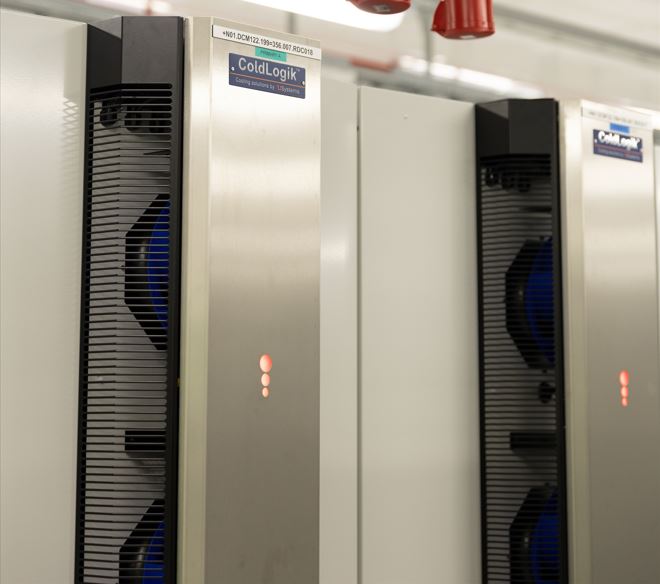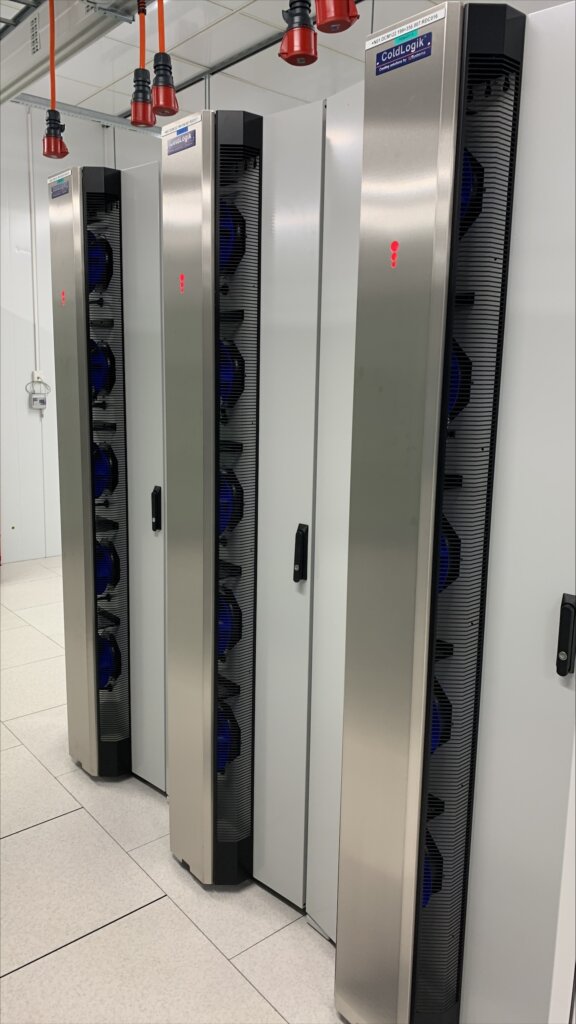How Bulk Data Centers is keeping its cool with soaring AI data demands
Research by the IDC indicates that the growing use of AI technology will require storage capacity in data centers to reach 21.0 zettabytes by 2027. More storage necessitates more energy, and, as a result, data centers are trying to manage growing customer workloads while pre-empting future technological advancements that will further increase infrastructure requirements.

Source: Bulk Data Centers
In addition, climate change will continue to impact businesses and communities worldwide, partly due to rising energy demands. Therefore, it is imperative that the environmental impact of the AI surge is addressed, for example, by implementing state-of-the-art cooling technology and optimizing data center site locations.
Bulk Data Centers, a builder and operator of Nordic data centers, is an example of a company taking steps to address growing energy demands sustainably. TechHQ spoke with Rob Elder, the company’s Chief Commercial Officer (CCO), to find out more about the innovative strategies and technologies implemented to achieve this goal.
Increasing rack density over horizontal expansion
In mid-2023, Bulk Data Centers invested heavily in USystems’ CL20 Active Rear Door Heat Exchangers to support new, power-dense technologies needed to meet customer demands. These include GPU-based hardware, which requires up to 50 kW of power per rack.
Mr Elder told TechHQ: “Customers were asking for density that was beyond the capabilities of traditional systems, plus they wanted more flexibility to ramp up density when needed. This was driven by the ever-growing power of the GPUs and CPUs that customers use.”
Increasing the rack density is a more environmentally friendly way of accommodating larger workloads than horizontal expansion because cooling tends to be more efficient at higher temperatures.

Source: Bulk Data Centers
Mr Elder said: “Some operators try to spread out high-density workloads because they don’t have the cooling systems to accommodate it, but the problem with that is you use more materials to distribute pipework and cables over a longer distance. You also need more real estate because you need a bigger building.
“So actually, by increasing the density, you benefit from smaller buildings, and you densify the infrastructure. All of that further reduces the impact of operations.”
Choosing a site to lower cooling requirements
Bulk Data Centers puts a particular focus on sustainability when selecting sites for expansion. Its facilities are in the Nordics, which benefit from year-round low temperatures and provide natural cooling to racks. “You can increase the number of hours that you’re not running mechanical cooling, which reduces the reliance on electricity,” said Mr Elder.
Electricity in these countries carries a smaller environmental footprint compared to others due to their abundant renewable energy resources. For instance, in Norway, where Bulk has several data center facilities, electricity is sourced from renewable energy.
Mr Elder added: “We’re also assessing supply chain components for environmental impact via procurement, including equipment suppliers and using materials like green steel in construction.”
Employing energy-efficient rear door coolers
While Norway is a naturally cool place, it is not enough to rely entirely on direct air cooling, and Mr Elder said that Bulk Data Centers has “always recognized the limitations of conventional cooling.
USystems’ CL20 Active Rear Door Heat Exchanger units reclaim 15 percent of computing power compared to traditional cooling and save over 50,000 trees-worth of carbon per 1 MW deployment. With adaptive intelligence controlling Bulk Data Centers’ room temperatures, the system minimized risks associated with high-density computing and provided predictable air management. Therefore, it aligned seamlessly with Norway’s energy-efficient ethos and low-carbon hydro energy at Bulk’s N01 campus in Kristiansand, Southern Norway.
“We could offer a peak density beyond what the average was because each door has its own capacity, capturing energy directly from the back of each rack,” said Mr Elder. “Our first deployment with a customer gave an average of 40 kW of rack, but a peak of up to 60 kW.”

Source: Bulk Data Centers
Boosting the peak density allowed Bulk Data Centers to be more flexible in accommodating customers’ power demands. “Having a standard design when we don’t know exactly what our customers are going to be deploying means we’ve got that flexibility and can still meet that short timeframe they require,” he said. “That’s why we’ve continued to develop our relationship with USystems because flexibility and speed are important to customers.”
What’s next for data center operators?
Looking to the future, the CCO emphasized how important it is for data center operators to stay on their toes when it comes to adaptation and innovation. “We’re at the beginning of what seems to be a dramatic shift.”
“Designs will keep evolving, reaching for higher density and necessitating a blend of water-cooled, direct-to-chip, and air-cooled systems.”
Despite growth, the environmental impact must also be considered. “With the massive IT loads that we’re witnessing and the escalating power demands, there’s a growing need for awareness regarding environmental impact.”
As power demands rise and environmental considerations become increasingly crucial, Legrand’s solutions stand ready to future-proof data center infrastructure while minimizing its carbon footprint. Discover how the customizable solutions, endorsed by industry leaders and equipped with adaptive intelligence, could revolutionize your operations by visiting the Legrand website today.








